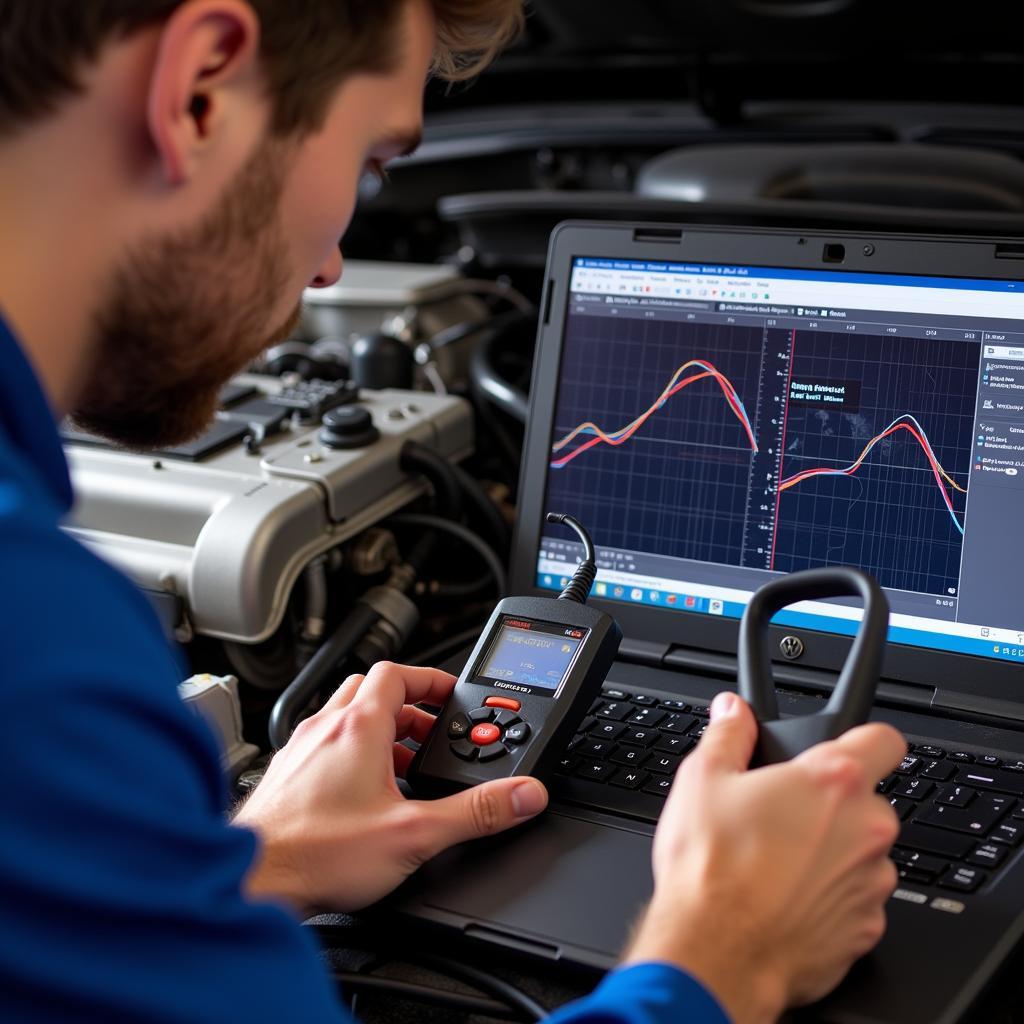The P0234 code is a common diagnostic trouble code (DTC) that can occur in vehicles equipped with a turbocharger or supercharger. It signals a problem with the boost pressure sensor “A” circuit, specifically indicating that the signal voltage is too high. While the code itself provides a starting point, proper diagnosis and repair require a deeper understanding of the underlying causes and potential solutions. This article aims to provide a comprehensive guide to VCDS P0234, focusing on troubleshooting and offering practical solutions for both mechanics and car enthusiasts.
What does VCDS P0234 Mean?
The VCDS P0234 code specifically refers to “Boost Pressure Sensor A Circuit Intermittent/Erratic.” Let’s break this down:
- Boost Pressure Sensor: This sensor monitors the pressure created by the turbocharger or supercharger, which forces more air into the engine for increased power.
- “A” Circuit: This typically indicates the sensor’s signal circuit, responsible for sending pressure readings to the engine control unit (ECU).
- Intermittent/Erratic: This means the voltage signal from the sensor is fluctuating or outside the expected range, suggesting an inconsistent or unreliable reading.
When the ECU detects a voltage signal from the boost pressure sensor that is higher than expected, it triggers the P0234 code.
boost-pressure-sensor-location|Boost Pressure Sensor Location|Photo of a car engine with the boost pressure sensor highlighted in a circle.
Common Causes of VCDS P0234
Several issues can cause the P0234 code:
- Faulty Boost Pressure Sensor: A malfunctioning sensor itself is a common culprit. This could be due to internal failure or damage.
- Wiring Problems: Damaged, loose, or corroded wiring in the sensor circuit can disrupt the signal.
- Vacuum Leaks: Leaks in the intake system after the turbocharger can affect boost pressure readings.
- Turbocharger/Supercharger Issues: Mechanical problems with the turbocharger or supercharger itself, such as a sticking wastegate or faulty boost control solenoid, can lead to overboost conditions.
- ECU Malfunction (Rare): While less common, a problem with the ECU can also cause this code.
turbocharger-diagram|Turbocharger Diagram|A diagram illustrating how a turbocharger works, with labels for key components like the turbine, compressor, wastegate, and boost pressure sensor.
Diagnosing VCDS P0234
Here’s a step-by-step approach to diagnose the P0234 code:
- Visual Inspection: Begin with a thorough visual inspection of the boost pressure sensor, wiring harness, and vacuum lines connected to the intake manifold. Look for any obvious signs of damage, loose connections, or debris.
- Check for Vacuum Leaks: Inspect the intake system for any leaks, particularly in the hoses and connections after the turbocharger. A simple test is to spray soapy water around these areas while the engine is idling – any leaks will cause bubbles to form.
- Test the Boost Pressure Sensor: Use a multimeter to check the sensor’s resistance and voltage readings against the manufacturer’s specifications. This will help determine if the sensor is operating within the correct parameters.
- Inspect the Turbocharger/Supercharger: Check for any signs of damage or wear on the turbocharger or supercharger itself, including the wastegate and boost control solenoid.
- Scan for Other Codes: Using a diagnostic scanner like those offered by CARDIAGTECH, check for any other DTCs stored in the ECU. These additional codes can provide valuable clues about the root cause of the problem.
How to Fix VCDS P0234
The repair solution will depend entirely on the underlying cause identified during the diagnostic process:
- Replace the Boost Pressure Sensor: If the sensor is faulty, replacement is the only solution.
- Repair Wiring: Repair or replace any damaged, loose, or corroded wiring in the sensor circuit.
- Address Vacuum Leaks: Repair any vacuum leaks found in the intake system.
- Repair or Replace Turbocharger/Supercharger Components: If the issue lies within the turbocharger or supercharger system, repair or replace the faulty components, such as the wastegate actuator or boost control solenoid.
- ECU Reprogramming or Replacement: In rare cases, the ECU may require reprogramming or replacement.

